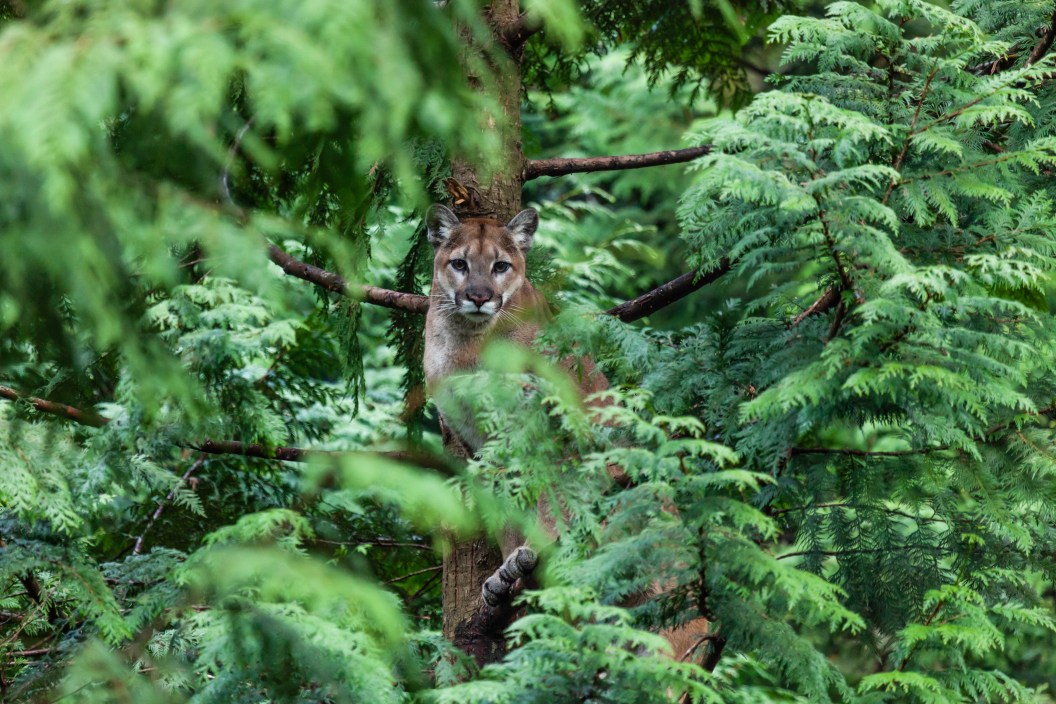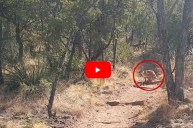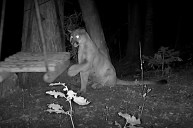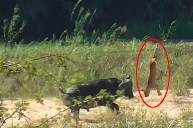Mountain lions, also known as pumas, panthers, or cougars, were once found throughout North America. A close encounter with a mountain lion can strike fear into anyone's heart, but the big cats are typically quiet and elusive. They're far more likely to spot (and avoid) you than you are to see them.
But as always, it's important to be ready for any scenario when you're planning an adventure in the backcountry, particularly when it comes to wild animals and possible mountain lion encounters. Let's go over some basic mountain lion info, so you know what to do—and what not to do—should you come across one in the wild.
Where Do Mountain Lions Live?
While mountain lion habitat isn't quite as extensive as it one was, the big cats still have a relatively large range, occupying the western United States, especially California, Colorado, and Utah, as well as parts of North Dakota and Florida.
Mountain lions can be found anywhere from deserts to coastal forests and sea level to 10,000-foot elevations. However, mountain lion sightings commonly happen in steep, rocky canyons or mountains, especially if there's a deer population nearby.
What Does a Mountain Lion Sound Like?
Hollywood and wilderness movies have no doubt had a negative impact on the perceived sounds many people believe these big cats make. Most movies tend to give them more of a low growl or a vicious roar, but they don't actually make much noise at all unless they're trying to communicate with other cats, such as when mountain lions are in heat.
In the rare event that they emit any noise, it's more of a raspy scream than a growl, which you can hear in the video above. It sounds much more like a domesticated cat than it does a lion, but far louder than your typical house cat sounds.
Other than the loud screeching sounds, they also purr, squeak, and meow like ordinary cats. Sometimes the sounds are so high-pitched that the average camper could mistake them for birds or insects out in the woods, meaning it's possible you've heard a mountain lion sound without even realizing it.
What Does Mountain Lion Scat Look Like?
One of the telltale signs that the poop you found came from a mountain lion is that it will often have bits of feathers, hair, and bones in it. Mountain lion scat maybe eight to nine inches long and up to one inch wide and is often segmented and grey or white in color. If you go look in your cat's litter box, imagine that, but scaled up to the large size of the animal.
Mountain lions use scat to mark their territories, and it will often be in prominent locations to further emphasize that. But if you see it while out engaging in wilderness areas, you shouldn't be frightened. Just be aware that there may be a large cat in the area.
How Fast is a Mountain Lion?
Fast enough that you won't be able to run away! In all seriousness, these big cats are fast. They're not quite as speedy as a cheetah, but they can use those powerful front and hind legs to reach speeds of 30 to 50 miles per hour in some instances.
This makes sense when you consider their primary prey items are speedy ungulates like deer. Mountain lions will also chase down other fast-moving prey like rabbits, elk, bighorn sheep, mountain goats, and pronghorn antelope. Some are even known to kill feral hogs, armadillos, raccoons, and even porcupines.
Will a Mountain Lion Attack a Human?
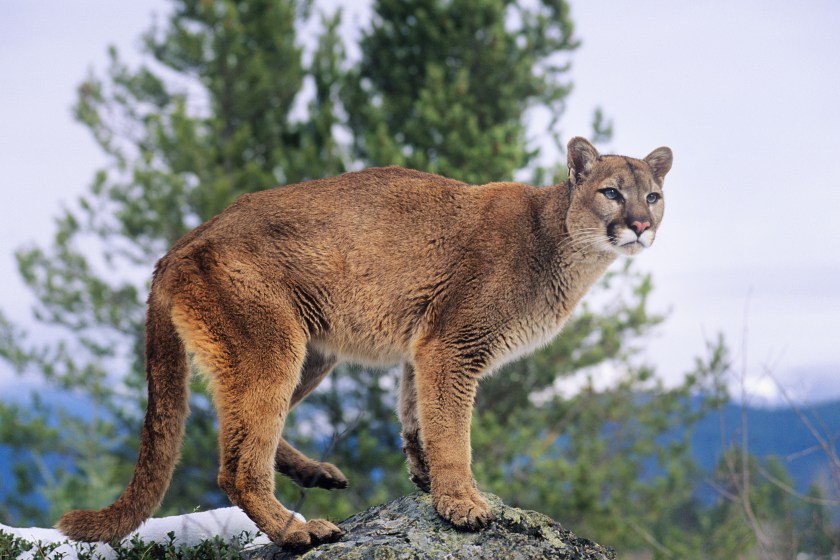
Getty Images, IPGGutenbergUKLtd
Mountain lion attacks are incredibly rare, with only 27 fatal mountain lion attacks from 1890 to 2021. However, as humans increasingly enter the big cats' territory, the risks of an unpleasant altercation increase, with sightings of mountain lions becoming more common.
When recreating in the habitat of any large predator, it's important to know what to do if you see one, so you can keep yourself and the animal safe.
What Should You Do if You See a Mountain Lion?
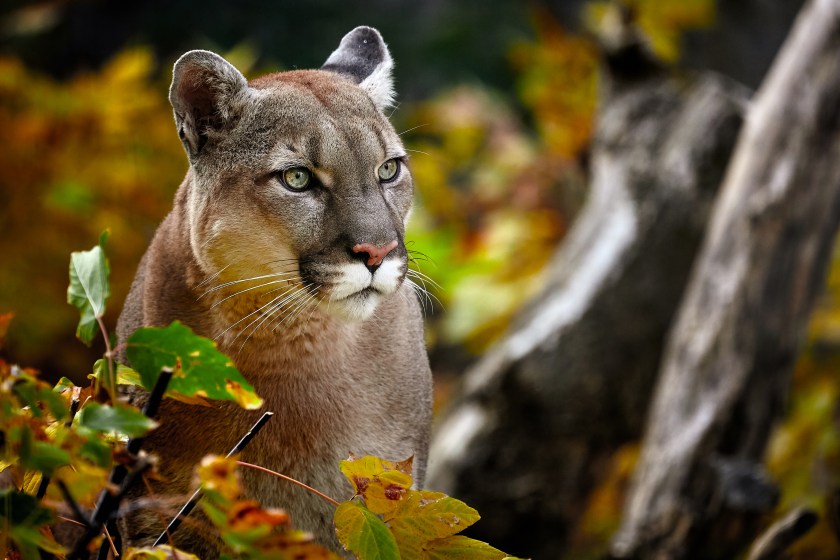
Getty Images, Evgeny555
If you're hiking or camping in mountain lion country, the most important thing is to avoid even seeing a a mountain lion in the first place. To ensure this happens, never hike alone in mountain lion habitat, and make sure to make noise as you are hiking, to warn any mountain lions (or other animals) that you're nearby.
If you happen to see a mountain lion while hiking or walking through the woods, remember these things:
- Try to remain calm. Don't approach the mountain lion but don't panic and retreat quickly, either.
- Don't run. Instead, face the cat and stand still, or slowly back away while maintaining eye contact with the mountain lion.
- Stand up tall. Because a mountain lion's instinct is to perceive anything lower to the ground as easy prey, you should stand upright at all times and try to appear as big as possible. A standing human doesn't look like normal mountain lion prey, but a crouched-over human may look like a four-legged prey animal.
- Keep children and pets close to you. Pick up any small children or dogs without completely bending over, so they also appear taller and larger to the big cat.
Although it's unlikely, a mountain lion could continue to move in your direction and show some signs of aggression. If that happens, try to intimidate the mountain lion. Do anything you can to look big, such as holding your hands above your head or slowly waving your arms back and forth.
You can also speak in a loud, deep voice (don't yell or scream) and bang together anything you're carrying to create noise. If you're able, throw things in the direction of the mountain lion, but not at it. Throw rocks, stones, water bottles, or branches—anything you can grab. You don't want to hurt the animal, but rather send these projectiles flying in its direction to land on the ground near it. Think of these as warning shots.
And, yes, this advice may sound familiar, as these are the same tips you use to stay safe when hiking in bear country.
What to Do if a Mountain Lion Attacks You
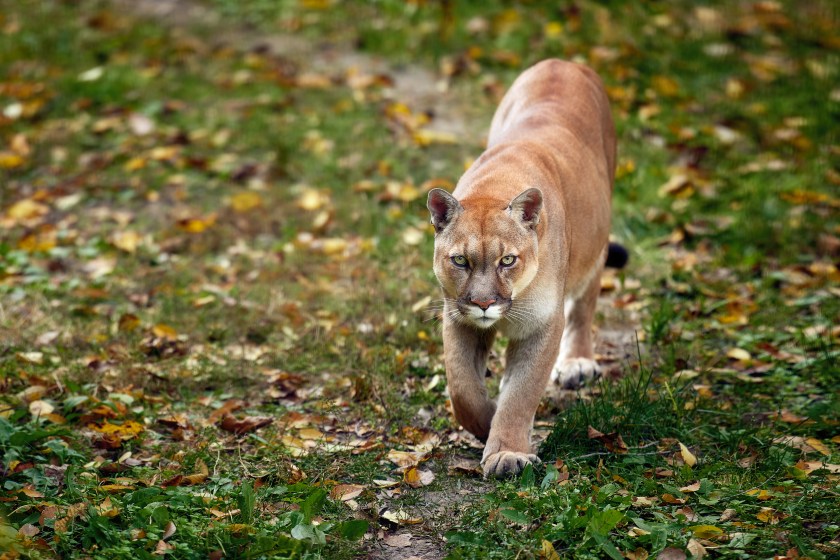
Getty Images, EvgeniyQ
If the mountain lion continues to approach you, start throwing things directly at it, rather than near it. The National Park Service recommends you aim for the cougar's body, not the head. Blinding the cat in one eye with a projectile could just make it more dangerous, both for you and for later visitors to the park. Most mountain lion attacks are by cats who are injured, stressed, or hungry.
In the rare case that a mountain lion attacks you, fight back with all your might. Use whatever you have to defend yourself: a walking stick, a water bottle, or, as a last resort, your bare hands. Try to remain standing, and use your backpack as a shield. Mountain lions will often go for the head or neck, so protect these if you can.
Should I Call 911 if I See a Mountain Lion?
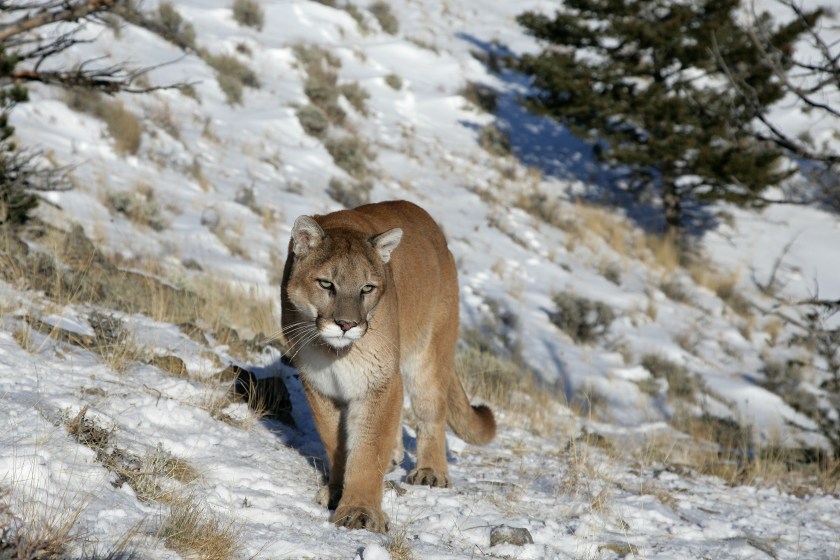
Getty Images, through-my-lens
If you have a mountain lion sighting or are attacked by one, report it as soon as it is safe to do so. If you're on National Park land, report it to the visitor center. Otherwise, yes, call 9-1-1.
It's possible to survive a mountain lion attack, but it's even better to avoid a run-in in the first place. Be sure to follow big cat safety tips from organizations like the Mountain Lion Foundation, the National Park Service, and your state wildlife agencies.
READ MORE: Modern Wildlife Conservationists Are Changing the Hunting and Fishing Worlds
